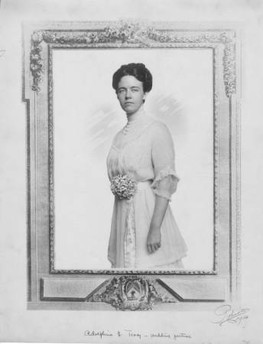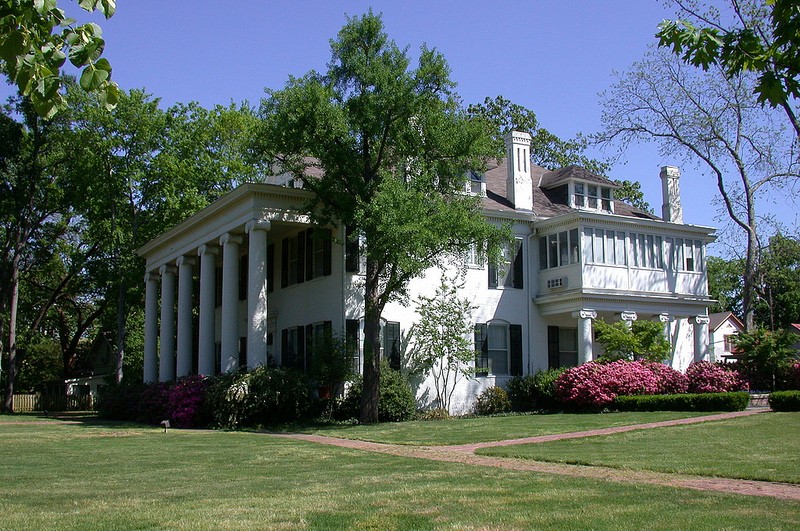Pike - Fletcher - Terry House
Introduction
Text-to-speech Audio
Images
Adolphine Fletcher Terry wedding portrait. Image Credit: UALR Center for Arkansas History and Culture

Pike - Fletcher - Terry House. Image Credit: Arkansas Arts Center

Backstory and Context
Text-to-speech Audio
This home built in 1840 has housed notable Little Rock families, served as a women’s college, and accommodated a museum gallery. This building was placed on the National Register of Historic Places in 1972 and is currently administered by the Arkansas Arts Center.
The original structure of this home was built by Albert Pike, a local lawyer and prominent Freemason. Pike deeded the property to his daughter Lillian Pike, who in turn leased the building to Arkansas Female College in 1873. By 1876, the college had made a large addition to the building including a study hall and dormitory space. Lou Krause purchased the property in 1886, but the school moved to another facility in 1889, and Krause deeded the home John G. Fletcher.
Fletcher, Krause’s brother-in-law, was a distinguished banker and cotton broker who occupied the house with his family. This included his wife, Adolphine Krause Fletcher, and his three children, Adolphine, John Gould, and Mary. The Fletcher family made several changes to the property including the removal of the additions constructed during its time as the Arkansas Female College, the removal of the original detached kitchen, and the addition of a conservatory.
After her mother Adolphine Krause Fletcher’s death in 1910, Adolphine Fletcher married lawyer and local civic leader David Dickson Terry. They were married in the parlor of the house and continued to live there exclusively, with the exception of Terry’s time as a U.S. Congressman. The Terry family also made alterations to the property by removing additional out buildings, and adding a brick garage and screened porch. Changes were also made to architectural elements to reflect the Colonial Revival style, including the replacement of the main staircase.
Adolphine Fletcher Terry continued to live in the family home with her five children during the ten years that David served as a congressman. She was influential in the community with regard to education and women’s rights. The Pike - Fletcher - Terry house served as the meeting place for the Women’s Emergency Committee to Open Our Schools, a civic group that supported the reopening of local schools following the Central High Desegregation Crisis of 1957. The names of women involved in the WEC were added to the conservatory's windows to commemorate their work.
